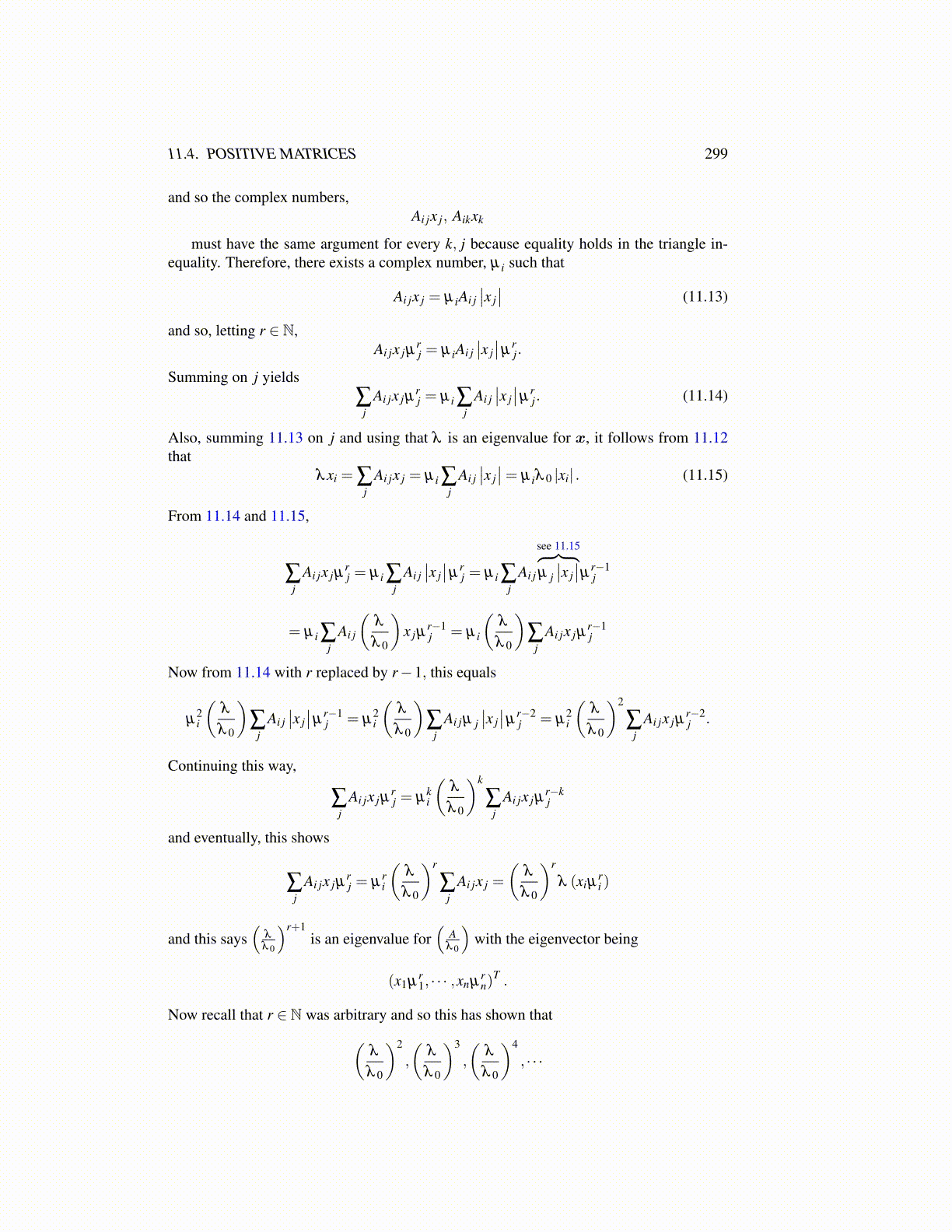
11.4. POSITIVE MATRICES 299
and so the complex numbers,Ai jx j, Aikxk
must have the same argument for every k, j because equality holds in the triangle in-equality. Therefore, there exists a complex number, µ i such that
Ai jx j = µ iAi j∣∣x j∣∣ (11.13)
and so, letting r ∈ N,Ai jx jµ
rj = µ iAi j
∣∣x j∣∣µr
j.
Summing on j yields∑
jAi jx jµ
rj = µ i ∑
jAi j∣∣x j∣∣µr
j. (11.14)
Also, summing 11.13 on j and using that λ is an eigenvalue for x, it follows from 11.12that
λxi = ∑j
Ai jx j = µ i ∑j
Ai j∣∣x j∣∣= µ iλ 0 |xi| . (11.15)
From 11.14 and 11.15,
∑j
Ai jx jµrj = µ i ∑
jAi j∣∣x j∣∣µr
j = µ i ∑j
Ai j
see 11.15︷ ︸︸ ︷µ j
∣∣x j∣∣µr−1
j
= µ i ∑j
Ai j
(λ
λ 0
)x jµ
r−1j = µ i
(λ
λ 0
)∑
jAi jx jµ
r−1j
Now from 11.14 with r replaced by r−1, this equals
µ2i
(λ
λ 0
)∑
jAi j∣∣x j∣∣µr−1
j = µ2i
(λ
λ 0
)∑
jAi jµ j
∣∣x j∣∣µr−2
j = µ2i
(λ
λ 0
)2
∑j
Ai jx jµr−2j .
Continuing this way,
∑j
Ai jx jµrj = µ
ki
(λ
λ 0
)k
∑j
Ai jx jµr−kj
and eventually, this shows
∑j
Ai jx jµrj = µ
ri
(λ
λ 0
)r
∑j
Ai jx j =
(λ
λ 0
)r
λ (xiµri )
and this says(
λ
λ 0
)r+1is an eigenvalue for
(A
λ 0
)with the eigenvector being
(x1µr1, · · · ,xnµ
rn)
T .
Now recall that r ∈ N was arbitrary and so this has shown that(λ
λ 0
)2
,
(λ
λ 0
)3
,
(λ
λ 0
)4
, · · ·